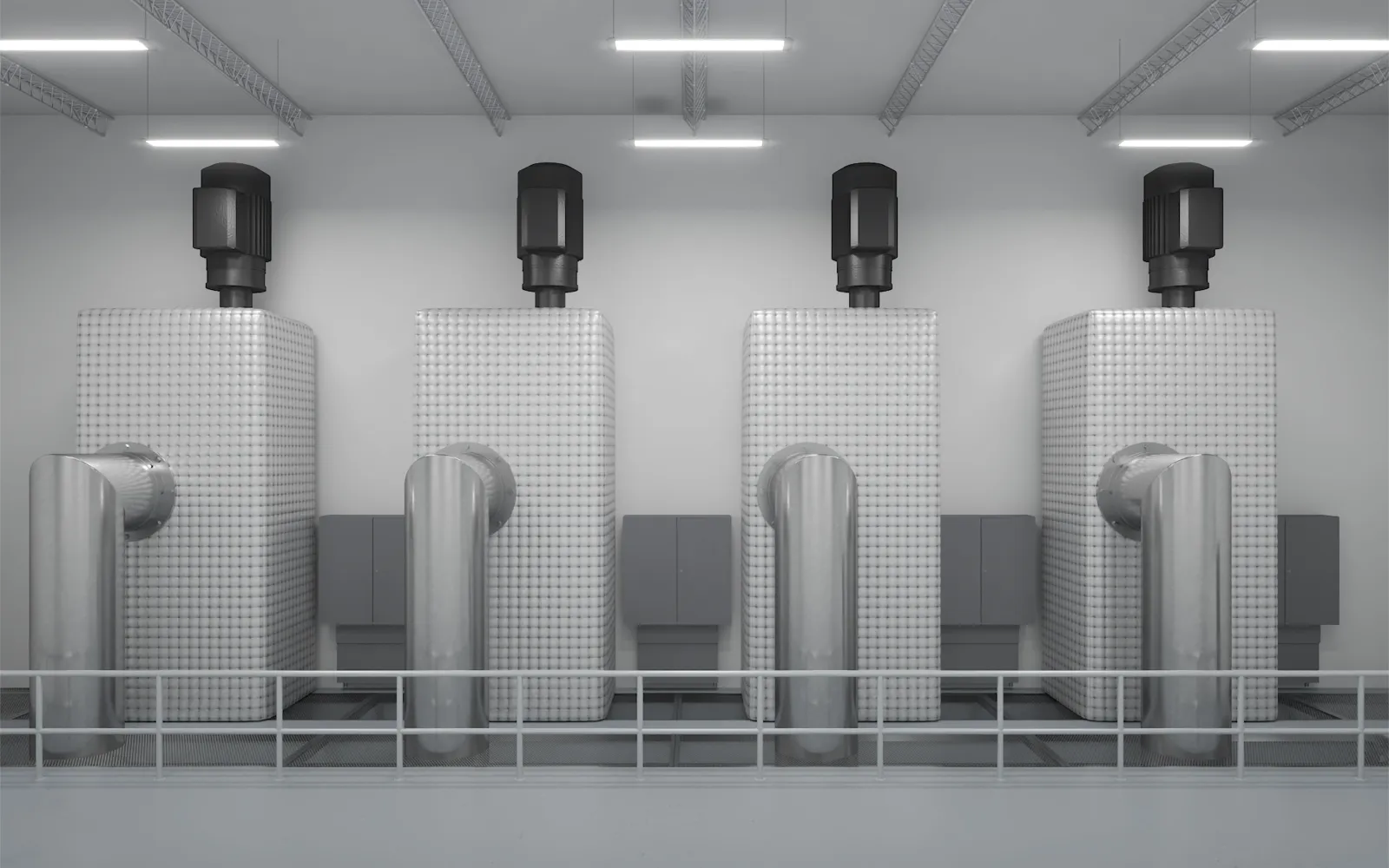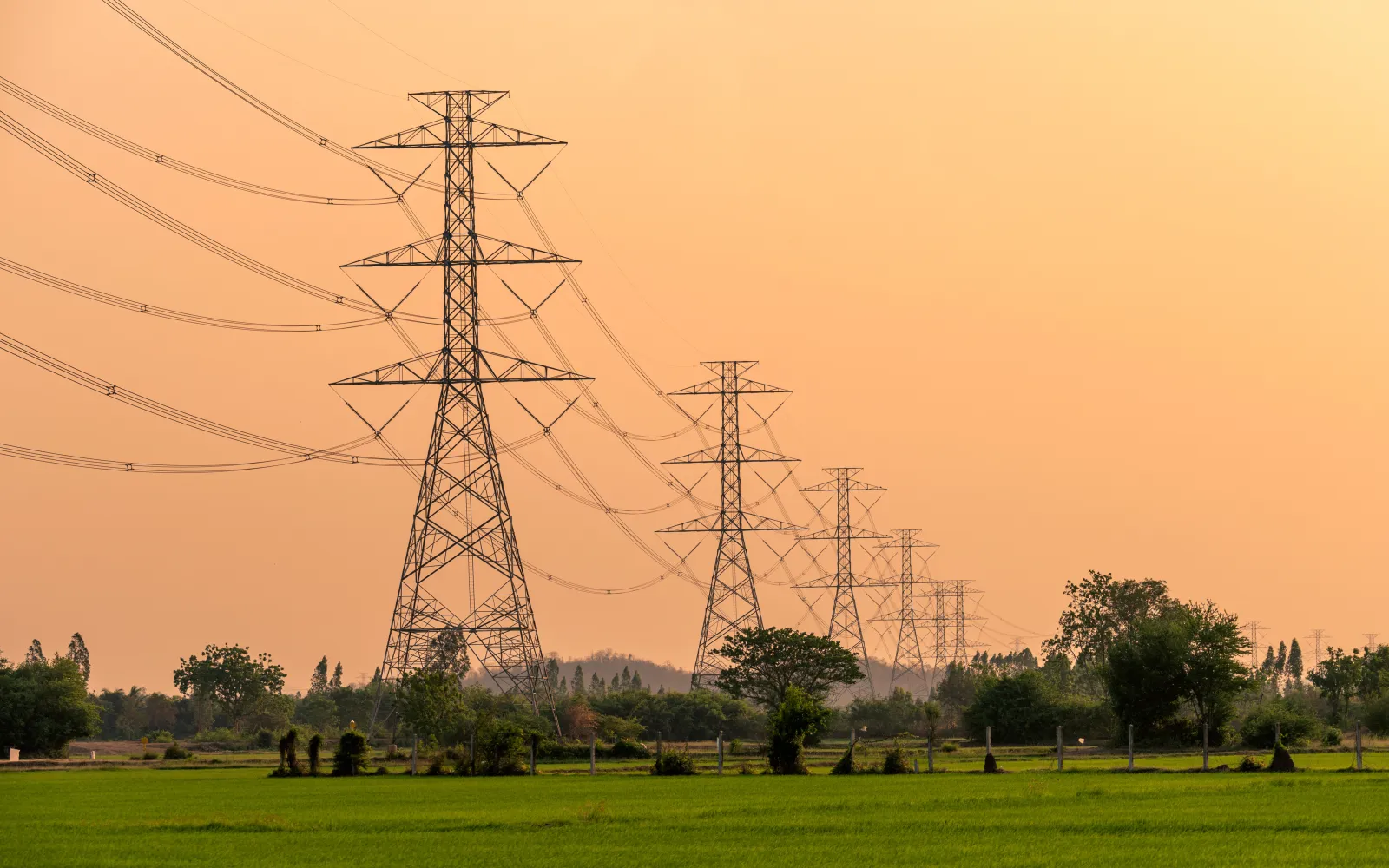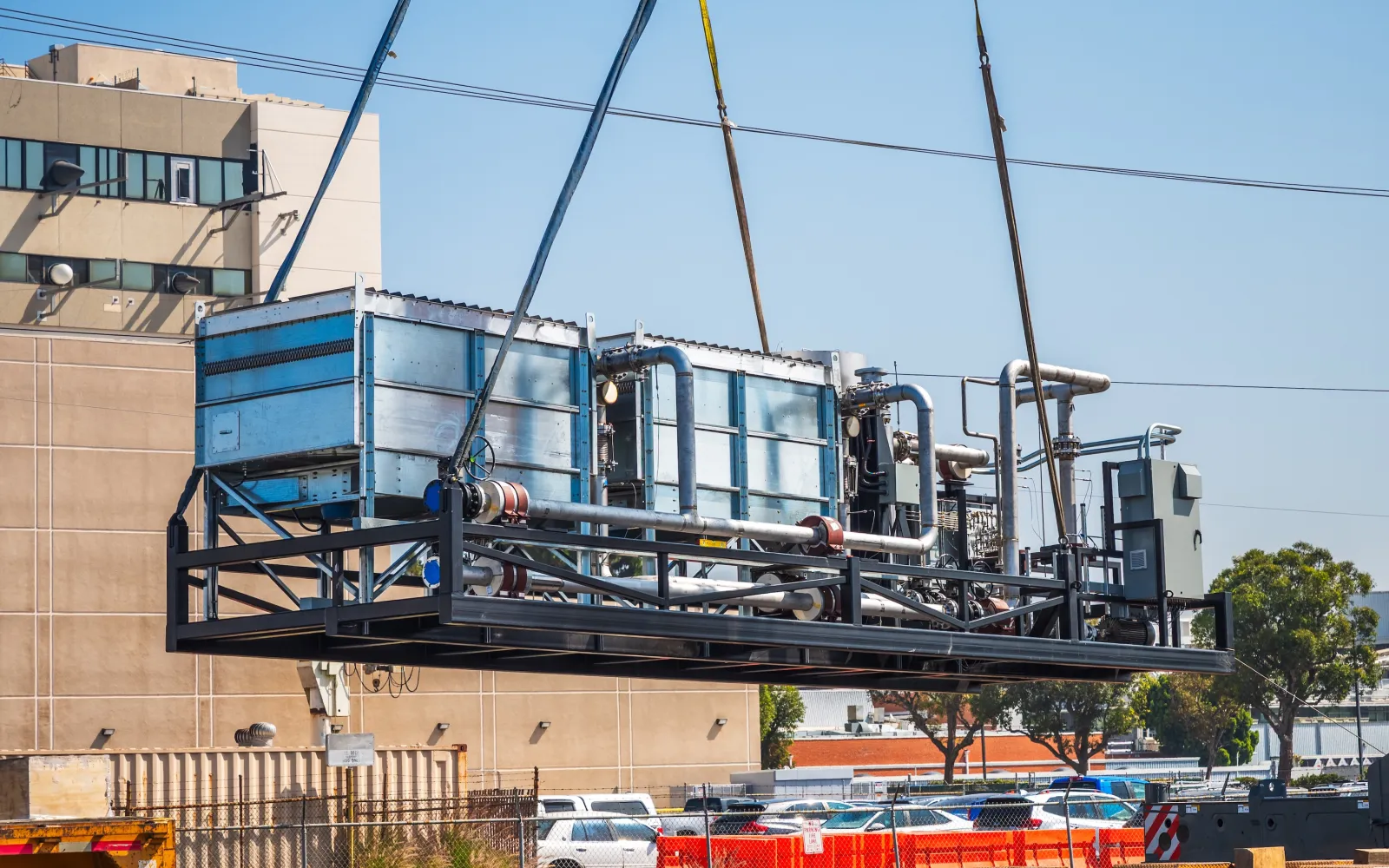
Fourth Power
Building thermal energy storage technology to buffer the grid, as variable electricity sources replace polluting ones
Grid energy storage is the indispensable technology if humanity hopes to generate more of its electricity from variable energy sources like solar or wind. Fourth Power, whose Series A round led by DCVC was announced today, can store energy at 1⁄10th the cost of lithium-ion batteries and distribute power directly into a truly renewable, resilient, and affordable electric grid.
In Fourth Power’s elegant plant design, molten tin carries heat energy into large graphite blocks, where it’s stored until needed, and then turned back into electricity using thermophotovoltaic cells. The technology can also provide heat for high-temperature industrial processes. DCVC believes it will help fill a critical gap in the energy ecosystem.
The good news on the climate front is that the cost of electricity from solar photovoltaic panels and wind turbines continues to drop, giving us a path toward decarbonizing the entire electrical grid. The challenge is that sun doesn’t shine and the wind doesn’t blow all the time: because solar and wind power are inherently variable, we need a full range of storage technologies to meet electricity demands. Lithium-ion and other types of chemical batteries can help bridge the gap, but they’re expensive, and they can only deliver stored energy for a few hours. What’s needed are practical ways to store power for 5 to 100 hours.
Fourth Power was founded by MIT mechanical engineering professor Asegun Henry who perceived that need a decade ago as a fellow at the Advanced Research Projects Agency-Energy (ARPA‑E), where he was later a program director. Henry’s specialty was heat transfer, and he saw early on that the more heat you can load into a storage medium, such as graphite, the longer it will retain that heat. He also noticed that the key to making the concept work at grid scale would be to find an efficient, flexible way to transport the heat in and out of the medium.
His answer was to build an all-ceramic pump that could pump liquid metal above 1400°C — a breakthrough that’s still in the Guinness Book of World Records. Today, there are three parts to Fourth Power’s system: the liquid metal circulation system (now powered by an all-graphite pump), where electric heaters powered by grid energy raise molten tin to extreme temperatures; an array of graphite blocks that absorb and store the heat from the molten tin; and a tower of heat engines, where energy from the graphite blocks make metal so glowing-red-hot that it generates electricity in adjacent thermophotovoltaic (TPV) cells. To prevent fires, the whole system will operate inside an argon-filled, oxygen-free warehouse, an idea borrowed from apple farmers.
Four features of Fourth Power’s approach make it especially promising. The first is that its plants will operate at such high temperatures. The energy available from radiative heat transfer (the process by which it gets from the blocks to the TPV cells) increases as the fourth power of the temperature — hence the company’s name. That means that the higher the heat, the more power can be extracted from the storage medium. Second, the molten tin circulation system allows the heat to be moved around quickly and flexibly, helping grid operators respond to changing electricity demand or weather conditions. Third, it will be easy for customers to increase the system’s storage capacity — all they have to do is add more graphite blocks. And finally, while Fourth Power’s system is uniquely positioned to supply power to the grid, it isn’t just for the grid. The plants run at such a high temperature that they could instead supply heat for hard-to-decarbonize industrial applications, such as steelmaking and cement making.
At Fourth Power, DCVC found an outstanding leadership team. Henry isn’t just one of the best technical founders I know — he’s done all the homework required to identify the major cost drivers in his system, ally with equipment providers, and understand the needs of utilities. The company is now led by CEO Arvin Ganesan, Apple’s former global head of environmental and energy policy. Ganesan led clean energy procurement at Apple and previously worked as a senior policy adviser to the Obama administration’s EPA administrator, Gina McCarthy, so he has an exceptional understanding of how the power industry works.
Ganesan and Henry are leading a team of experienced, capable engineers who have built many first-of-a-kind projects, and they have advisors with supply chain and deployment experience. They’re precisely the correct folks to execute at this stage of the company. The company will use the new funds to grow its team and build its first megawatt-scale thermal storage demonstration facility.
The need to buffer the grid with long-term energy storage will become more urgent as the deployment of variable generation sources rises, as more industrial processes switch from fossil energy to clean electricity, and as climate change makes the weather (and therefore the output of wind and solar facilities) even more volatile. We see Fourth Power’s solution as critical because it enables the continued growth of variable power, and complements our existing investments in predictable baseload power from sources like nuclear fission, nuclear fusion, and geothermal energy and moving us down the road toward deep decarbonization of polluting industries.
Rachel Slaybaugh is a Partner at DCVC.




